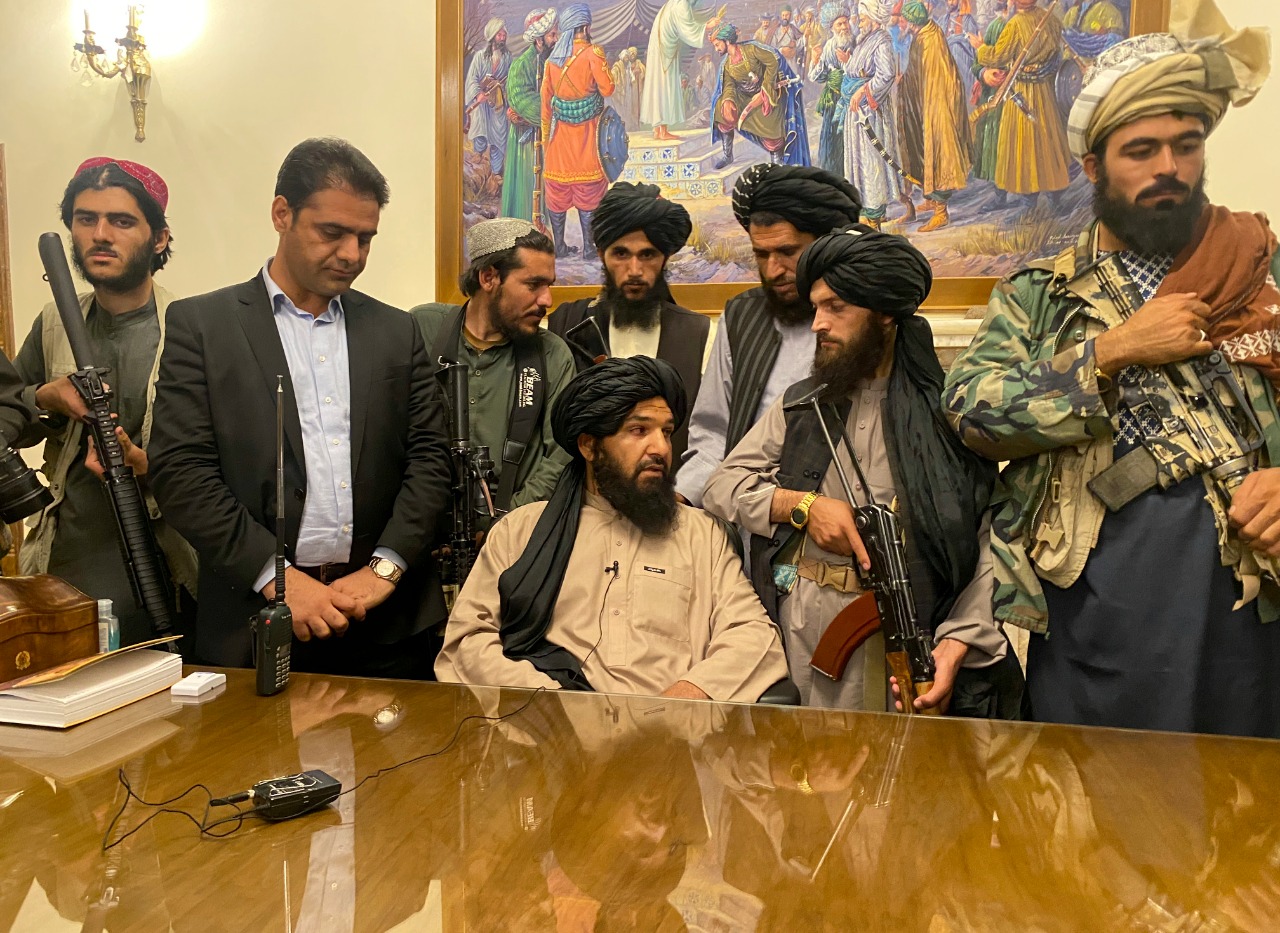
[ad_1]
the internal functioning and leadership of the Taliban movement, who seized the presidential palace in Kabul this Sunday, are shrouded in a halo of mystery, as when he ruled the Asian country between 1996 and 2001.

Here is a brief presentation of the main leaders of this radical Islamist group.
Haibatullah Akhundzada, the Supreme Leader
mullah Haibatullah Akhundzada was appointed leader of the Taliban in May 2016 during a rapid transition to power, a few days after the death of his predecessor, Mansur, wiped out by an American drone attack in Pakistan.
Before his appointment, little was known about Akhundzada, until then more focused on judicial and religious questions than on military art.
Although this scholar enjoyed great influence in the insurgency, of which he led the judicial system, some analysts thought that his role at the forefront of the movement would be more symbolic than operational.
Son of a theologian, originally from Kandahar, the heart of the Pashtun country in southern Afghanistan and cradle of the Taliban, Akhundzada quickly obtained an oath of allegiance from Ayman al-Zawahiri, the leader of Al Qaeda.
The Egyptian called him “Emir of the Believers”, a name which allowed him to establish his credibility in the jihadist world.
Akhundzada had the delicate mission to unify the Taliban, fractured by a violent struggle for power after the death of Mansur and the revelation that they had hidden for years the death of the founder of the movement, Mullah Omar. The insurgent managed to keep the group together and continued to be fairly low-key., limiting itself to transmitting rare annual messages on Islamic holidays.
Mollah Baradar, co-founder
Abdul Ghani Baradar, Born in Uruzgan province (south) and educated in Kandahar, he is the co-founder of the Taliban with Mullah Omar, who died in 2013, but whose death was hidden for two years.
Like many Afghans, his life was shaped by the Soviet invasion in 1979, which made him a mujahedin, a fundamentalist Islamic fighter, and allegedly fought alongside Mullah Omar.
In 2001, after the American intervention and the fall of the Taliban regime, we said he was part of a small group of insurgents ready to accept an agreement recognizing the administration of Kabul. But this initiative failed.
Abdul Ghani Baradar was the Taliban military commander when he was arrested in 2010 in Karachi, Pakistan. He was released in 2018 especially for the pressure from Washington.
Heard and respected by the different Taliban factions, he was appointed head of his political office, located in Qatar.
From the Gulf country, he conducted negotiations with the Americans, which led to the withdrawal of foreign forces from Afghanistan.

Sirajuddin Haqqani, the head of the Haqqani network
Son of a famous anti-Soviet jihad commander, Jalaluddin Haqqani, Sirajuddin is both the number two in the Taliban and the leader of the Red Haqqani. This network, founded by his father, is classified as terrorist by Washington, who consistently viewed it as the most dangerous fighting faction ahead of US and NATO troops over the past two decades in Afghanistan.
As well is accused of having assassinated certain senior Afghan officials and of holding Westerners hostage to obtain a ransom or keep them as prisoners like the American serviceman Bowe Bergdahl, released in 2014 in exchange for five Afghan detainees from the Guantanamo prison.
Known for their independence, fighting skills and successful business, Haqqani reportedly responsible for Taliban operations in mountainous areas of eastern Afghanistann and that they would have a great influence on the decisions of the movement.
Mullah Yaqub, the heir
Yaqub, the son of Mullah Omar it’s him head of the powerful Taliban military commission, which decides the strategic orientations of the war against the Afghan executive.
His ancestry and connection to his father, whom he adores as a leader of the Taliban, made it a unifying figure within a large and diverse movement.
Speculations about his exact role in the insurgency are persistent. Some analysts believe that his appointment as head of this commission in 2020 was only symbolic.
[ad_2]
Source link
 Naaju Breaking News, Live Updates, Latest Headlines, Viral News, Top Stories, Trending Topics, Videos
Naaju Breaking News, Live Updates, Latest Headlines, Viral News, Top Stories, Trending Topics, Videos